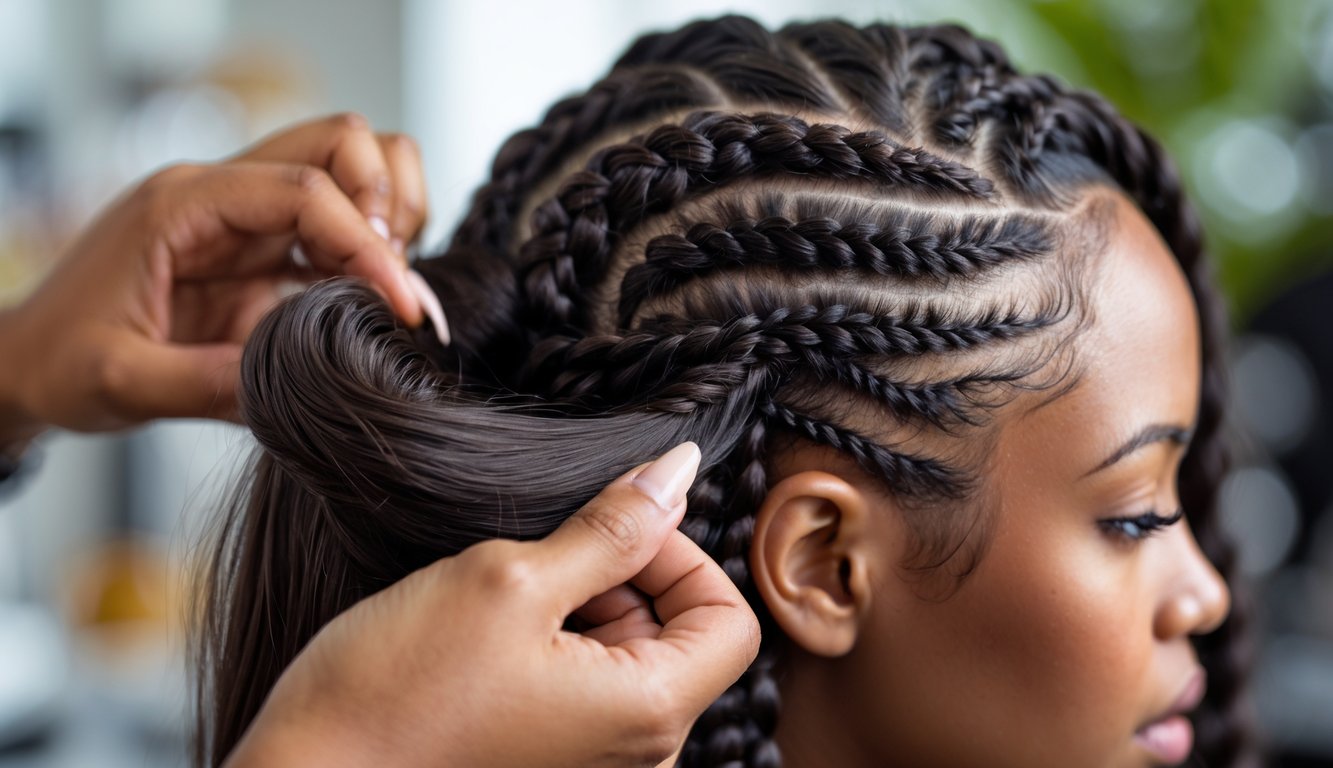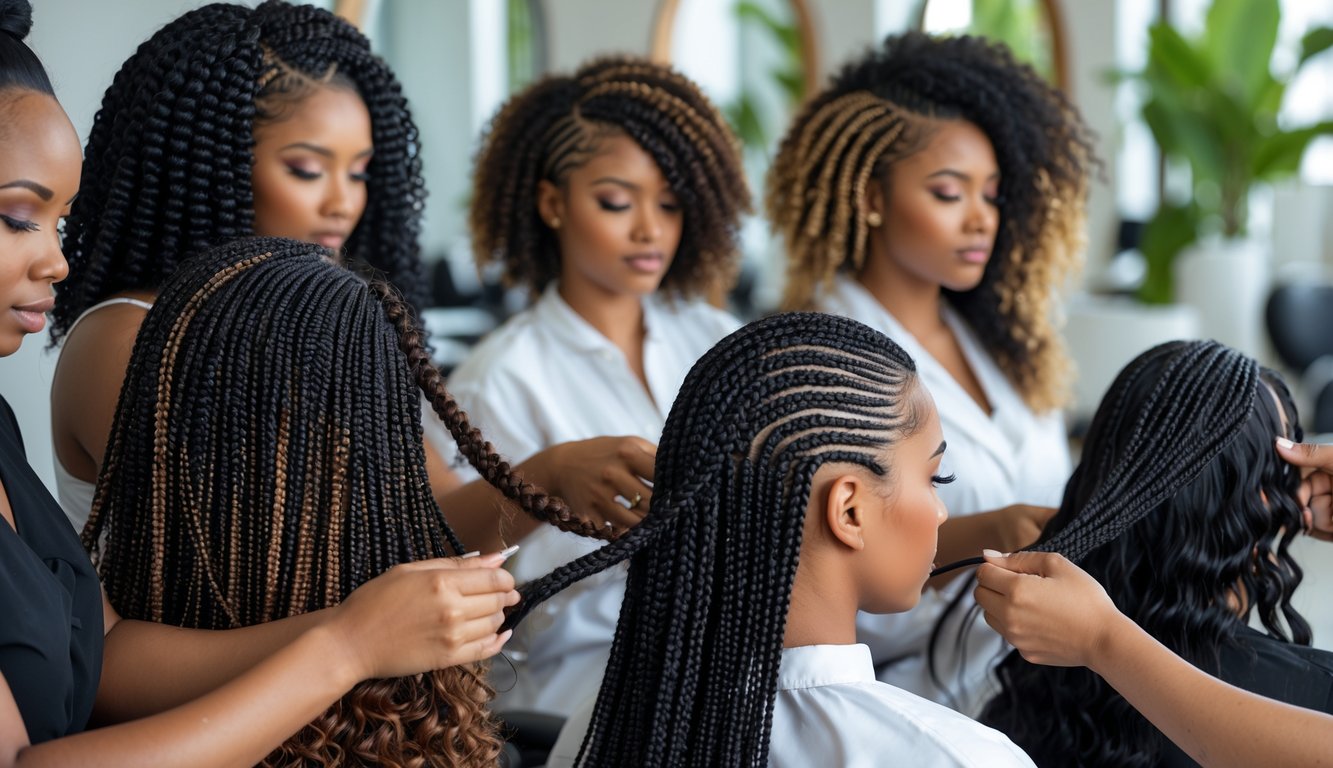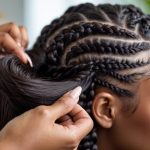
Protective Styling for Growth
Nobody really explains why those so-called “protective” styles—box braids, chunky cornrows, twist outs—sometimes boost growth and sometimes just trash your edges. And don’t even get me started on those edge control gels that flake off by lunchtime. Every stylist I know has a different ranking: some love updos that barely touch the scalp, others just roll their eyes at “maximum retention.” The numbers are all over—4–6 weeks for tribal braids, six styles in rotation, and people swear they get less breakage…until they don’t.
Benefits of Protective Hairstyles
Flat twists, chunky braids, two-strand twists—sure, but I’m mostly in it for the daily relief. There’s this theory floating around that less friction means healthier ends (try proving that with a toddler yanking your Bantu knots at 7AM), and those dermatologist-approved leave-ins only go so far.
Stylists warn about too-tight faux locs and microbraids—looks good for a week, but then your hairline’s gone. You can try all the influencer hacks—satin scarves, scalp massages—yet the real win is just leaving your hair alone. Less combing, less snapping, and, yeah, the studies claim less mechanical damage. I read this 2023 article in the Journal of Cutaneous Medicine, said protective styling led to a 14% bump in length retention over a year. Still doesn’t explain why the back of my head never cooperates.
Popular Styles for Retaining Length
Box braids get all the hype, but I’ve seen more growth hiding in chunky rope twists or those giant crochet braids that take all day. Some clients rave about knotless braids—worth every penny, they say—but then their edges revolt if you skip the “low-tension” part.
Bantu knots, if you don’t make them too tight. Or just mix it up—flat twists in the front, braid-out bun in the back. One client wore faux locs for eight weeks, swore by argan oil, barely touched mousse, and somehow dodged single-strand knots. No YouTuber mentioned that. And, let’s be real, maintenance is never “set it and forget it”—there’s always a rogue piece, a stubborn flyaway, or a Monday where your updo just gives up.
Tailoring Braiding Patterns to Hair Types

Why does everyone act like there’s a one-size-fits-all braid pattern? There isn’t. Hair acts differently, and, honestly, I’ve seen enough breakage horror stories to be suspicious of anything labeled “universal.” If something sounds like a hack for every texture, I’d double-check. Fine, curly, plant-based, synthetic—they all need their own routine.
Best Patterns for Fine and Curly Hair
Fine hair and curly hair—opposite problems. You start parting and suddenly half the curls are fighting back. For fine hair (not just “thin,” but fragile), I always go super loose at the root, maybe sneak in a little OGX Coconut Miracle Oil for slip. I heard Dr. Yolonda Lenzy say, “Recurring tightness is the fastest route to traction alopecia,” and, honestly, that sticks with me.
Curly hair? You want patterns that work with the spiral, not against it—cornrows, Dutch braids, whatever lets the curl live. Microbraids seem tempting but always backfire; curls escape, breakage follows. If anyone tells you to use a rat-tail comb like on straight hair, get ready for a mess. Random: my cousin swears her S-waves only behave with Ghana braids, and I just let her have it.
Caring for Natural and Plant-Based Hair
Whenever I use plant-based or low-manipulation extensions, I forget porosity matters until my usual aloe or castor oil routine flops. Natural hair, especially type 4, doesn’t forgive harsh patterns—over-twisting means thinning edges, and why is coconut oil controversial again? Someone told me aloe vera juice preps the scalp for Fulani braids, but when I tried it, I just got itchy. Latch hook crochet saves time but only if you keep the scalp hydrated—a stylist in Atlanta swore dry braiding triples damage risk. Is that even true? Still, I deep condition with Mielle Organics Babassu Oil Mint and hope for the best.
Plant-based fibers (banana, hemp, whatever)—people hype them up, but they tangle like crazy if you skip daily spritzing. I compared Kanekalon to plant options in summer—sometimes plant is better, sometimes not. Honestly, it’s less about the fiber and more about how often I rethink my part sizes.
Adapting Styles for Synthetic Extensions
Synthetic extensions are nothing like natural hair. I learned the hard way—Kanekalon isn’t Remy, it creaks if you overbraid. Tension mapping is real. Jumbo packs will destroy your edges unless you zig-zag your parts, which looks weird but actually works. I saw a Reddit post claiming hot water sets any style—not true unless you use a heat-resistant leave-in (ORS Olive Oil is my go-to).
I use rubber gloves because static is a nightmare in winter, and if I skip silicone serum, everything frizzes. Color transfer? Oh, it happens. Blue or purple synthetics bleed onto sweatbands. I test every new batch by wearing it around the shop—if nobody notices, it’s good. Honestly, I wish extension packs came with tangle ratings. Untangling shouldn’t be a daily chore.
Essential Hair Care Before Braiding
What’s with all those lazy routines online—like, spritz some leave-in and you’re ready for braids? Nope. If you want a happy scalp that doesn’t revolt in three weeks, prep matters. I’m annoyingly strict: roots squeaky clean, moisture that actually sinks in, and finger detangling even though my mom says I overdo it.
Cleansing and Deep Conditioning
Shampoo is not optional, even though some people act like you can just slap on gel and go. Buildup clogs follicles, period. I rotate between Pattern’s Hydration Shampoo (smells like childhood, not kidding) and a half-water, half-apple cider vinegar rinse—burns a little but kills the itch.
But washing is only half the job. I read a 2023 trichologist report that said weekly deep conditioning cuts breakage by nearly half—makes sense, since knots just melt away. Look for panthenol, avocado oil, fatty alcohols (Cetearyl is your friend, don’t freak out about the word alcohol). If you’re prone to buildup, skip silicones.
Two steps, always: deep conditioner for at least 20 minutes, plastic cap, maybe some heat. Don’t forget your nape and edges—they’re easy to miss and always the first to snap.
Detangling and Hydration Tips
Wide-tooth combs: not just a prop, I promise. Detangling before braids is non-negotiable unless you want to spend half your life apologizing to your stylist (or, uh, yourself). Dry-detangling? I’m not a masochist. Hair needs to be wet, slippery with conditioner—Melanin Haircare leave-in is decent, but sometimes I just squeeze aloe gel straight from the leaf because, well, why not?
I section my hair into four, because that’s what my aunt drilled into me—she’s been braiding longer than I’ve been alive. Start at the ends, work up, grip the section so you’re not basically scalp-punching yourself. Hydration’s a whole other circus: water mist, then a few drops of jojoba or sweet almond oil (mineral oil is banned in my house, unless I’m aiming for snowstorm scalp later). Creams? Only if they’re light enough not to suffocate my hair under braids.
I want hydration to actually stick around, so I mix up distilled water, aloe, and a drop or two of glycerin in a spray bottle—roots love it, but I’ll admit, sometimes I overdo the glycerin and end up sticky. Oops.
Scalp Massage and Preparation
Is it embarrassing that I look forward to scalp massages more than the braids? There’s some study (Yamashita, 2016, I think?) claiming four minutes a day thickens follicles by 9%, but who has time for that? I set a timer, get distracted, end up massaging for two and a half minutes and call it self-care. I use my fingers or a silicone massager, and I rub in peppermint or tea tree oil mixed with grapeseed—smells strong, but at least it feels like I’m doing something.
Blood flow, placebo, whatever—it actually helps with tension headaches sometimes, or maybe I’m just convincing myself. I pay extra attention to my part lines, especially that zigzag I always regret later. Too much product before braiding? Disaster. Itchy scalp two days later? Always leftover stuff and sweat, don’t let anyone tell you otherwise.
Real prep is kind of tedious, honestly, but my scalp doesn’t scream at me halfway through, and the style lasts longer. Win, I guess.



